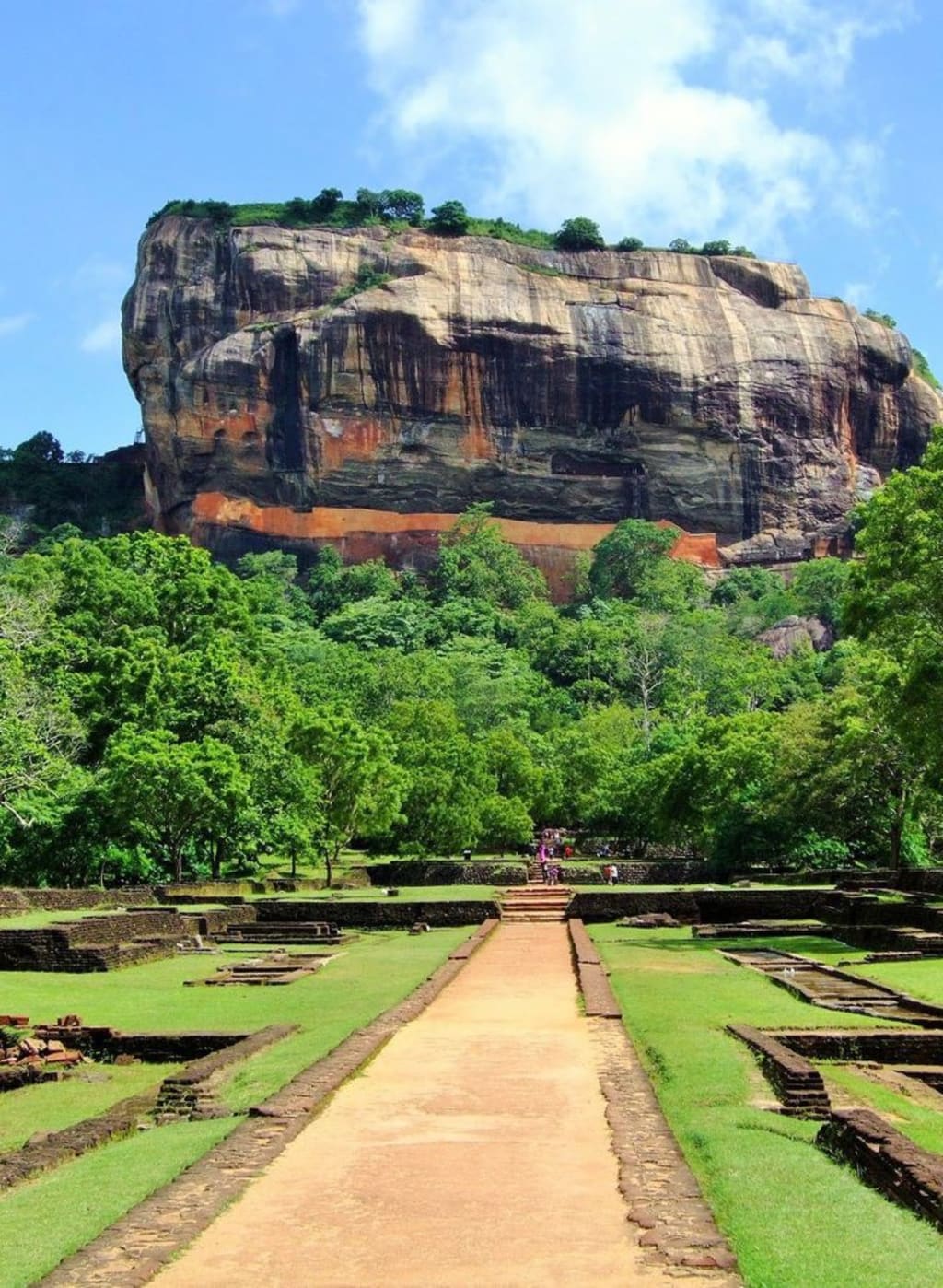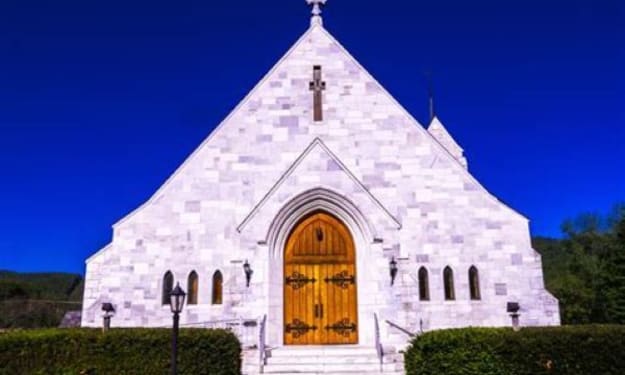The Enigmatic Sigiriya: Unraveling the History of Sri Lanka's Majestic Rock Fortress
The Reign of King Kashyapa: A Royal Retreat

Introduction
Sigiriya, often referred to as the Eighth Wonder of the World, is a significant historical and archaeological landmark located in the Matale District of Sri Lanka's Central Province. This ancient rock fortress, also known as Lion Rock, rises majestically about 200 meters (660 feet) above the surrounding plain and attracts thousands of tourists and scholars each year. Its unique geological formation, combined with its rich historical, cultural, and architectural significance, makes Sigiriya one of the most remarkable monuments in Sri Lanka. This article delves into the fascinating history of Sigiriya, from its geological origins to its transformation into a royal citadel and its current status as a UNESCO World Heritage Site.
Geological Origins
Sigiriya's formation dates back to over a billion years ago when the island of Sri Lanka was part of the supercontinent Gondwana. The rock itself is a hardened magma plug from an extinct volcano that eroded away over millions of years, leaving the imposing monolith we see today. The surrounding landscape is dotted with remnants of ancient volcanic activity, which has shaped the terrain into a complex mosaic of rocky outcrops, lush forests, and fertile plains. The geological significance of Sigiriya lies not only in its dramatic appearance but also in its influence on the human settlements that would later thrive in the region.
Early Human Settlements
Evidence suggests that the area around Sigiriya has been inhabited since prehistoric times. Archaeological excavations have uncovered tools, pottery, and other artifacts dating back to the Mesolithic period (c. 10,000-4,500 BCE). These early inhabitants were hunter-gatherers who exploited the rich natural resources of the region, including its abundant wildlife and water sources. The rock itself may have served as a natural shelter and a vantage point for these early communities.
The Buddhist Monastic Period
The first significant historical phase of Sigiriya began in the 3rd century BCE when it became a prominent site for Buddhist monasticism. The arrival of Buddhism in Sri Lanka during the reign of King Devanampiya Tissa (247-207 BCE) led to the establishment of numerous monasteries and religious centers across the island. Sigiriya's strategic location and natural defenses made it an ideal site for monastic retreat.
Monks carved out rock shelters and created meditation chambers in and around the rock, leaving behind inscriptions that provide valuable insights into the religious life of the period. These inscriptions, written in Brahmi script, date back to the 3rd and 1st centuries BCE and mention donations made by various patrons to support the monastic community. This early phase of Buddhist occupation laid the groundwork for the more extensive developments that would follow in the 5th century CE.
The Reign of King Kasyapa
The most illustrious chapter in Sigiriya's history is undoubtedly the reign of King Kasyapa I (473-495 CE). According to the Mahavamsa, an ancient chronicle of Sri Lankan history, Kasyapa was the son of King Dhatusena. Kasyapa, driven by a desire to seize the throne from his half-brother Moggallana, staged a coup and murdered his father. Fearing retribution, he relocated the capital from Anuradhapura to the more defensible location of Sigiriya.
Kasyapa transformed Sigiriya into an elaborate royal citadel, replete with palaces, gardens, and fortifications. The rock summit was converted into a fortified palace complex, accessible via a series of staircases and galleries that traversed the sheer rock face. The most iconic feature of Sigiriya is the Lion's Gate, an entrance flanked by two massive lion's paws carved into the rock, which gave the site its name.
The Architectural Marvels of Sigiriya
Sigiriya's architectural and engineering feats are a testament to the ingenuity and creativity of its builders. The site is renowned for its sophisticated hydraulic systems, which included canals, reservoirs, and fountains that supplied water to the royal gardens and provided a reliable source of drinking water. The gardens at Sigiriya are considered among the oldest landscaped gardens in the world and are divided into three distinct sections: the water gardens, the boulder gardens, and the terraced gardens.
The water gardens feature symmetrical layouts with interconnected pools, fountains, and pavilions, showcasing advanced knowledge of hydrology and landscape design. The boulder gardens incorporate natural rock formations into the overall design, creating a harmonious blend of nature and human ingenuity. The terraced gardens, located on the lower slopes of the rock, consist of a series of stepped platforms connected by pathways and staircases.
The Frescoes and Mirror Wall
One of the most famous and enigmatic features of Sigiriya is the series of frescoes that adorn the western face of the rock. These vibrant paintings, which date back to the reign of Kasyapa, depict celestial maidens known as apsaras. The frescoes are notable for their delicate beauty, intricate details, and vivid colors, which have been remarkably well-preserved over the centuries. The identities of the women depicted in the frescoes remain a subject of speculation, with some scholars suggesting they represent royal concubines, while others believe they are divine beings.
Another remarkable feature is the Mirror Wall, a polished surface that runs along a portion of the rock's western face. Originally, the wall was so highly polished that the king could see his reflection as he walked along it. Over time, the Mirror Wall became a canvas for graffiti left by visitors, with inscriptions dating from the 6th to the 14th centuries. These inscriptions, written in ancient Sinhala, Tamil, and other languages, provide valuable insights into the social and cultural milieu of the time.
Decline and Rediscovery
Following the death of King Kasyapa in 495 CE, Sigiriya's prominence as a royal citadel declined. Kasyapa was defeated in battle by his half-brother Moggallana, who subsequently returned the capital to Anuradhapura. Sigiriya reverted to its earlier status as a monastic retreat and continued to serve as a place of pilgrimage and meditation for Buddhist monks.
By the 14th century, Sigiriya had fallen into obscurity and was largely abandoned. The site became overgrown with jungle, and its remarkable history was forgotten by all but a few local villagers. It was not until the late 19th century that Sigiriya was rediscovered by British archaeologists, who began systematic excavations and restoration efforts. These efforts have since revealed the full extent of Sigiriya's historical and cultural significance.
Sigiriya Today
Today, Sigiriya is recognized as one of Sri Lanka's most important cultural landmarks and a UNESCO World Heritage Site. The site attracts thousands of visitors each year, who come to marvel at its ancient ruins, breathtaking frescoes, and panoramic views from the summit. Sigiriya's unique blend of natural beauty, architectural innovation, and historical intrigue continues to captivate the imagination of people around the world.
Conclusion
The history of Sigiriya is a fascinating journey through time, from its geological origins to its transformation into a royal citadel and its eventual rediscovery. The site's architectural marvels, artistic achievements, and historical significance make it a testament to the ingenuity and creativity of ancient Sri Lankan civilization. As a symbol of the island's rich cultural heritage, Sigiriya stands as a reminder of the enduring legacy of the past and the timeless beauty of human achievement.
About the Creator
JUHAID VOCAL TIME
By creators, for creators.
Enjoyed the story? Support the Creator.
Subscribe for free to receive all their stories in your feed. You could also pledge your support or give them a one-off tip, letting them know you appreciate their work.






Comments
There are no comments for this story
Be the first to respond and start the conversation.